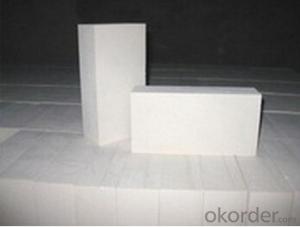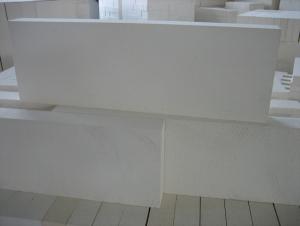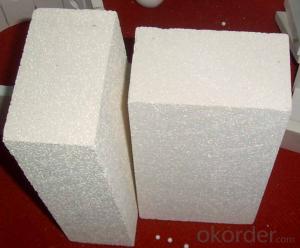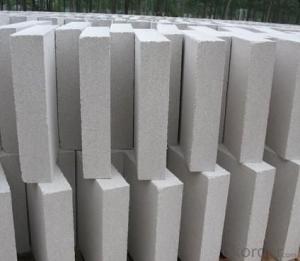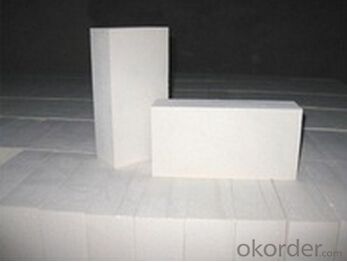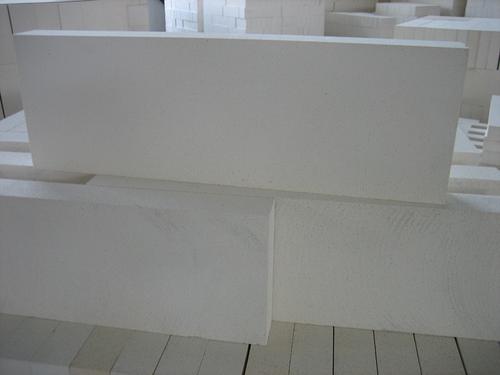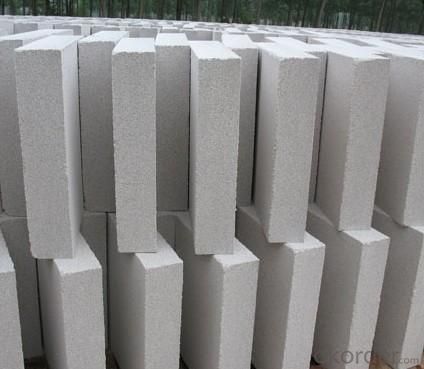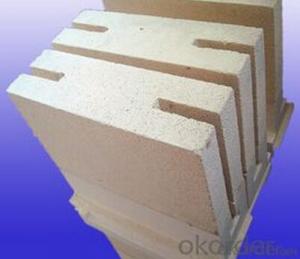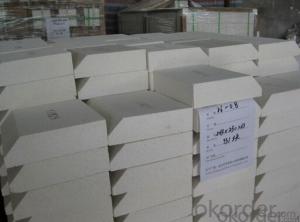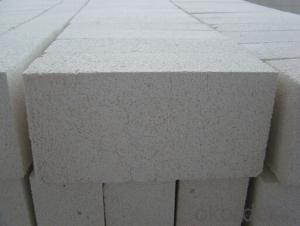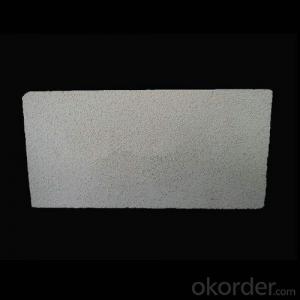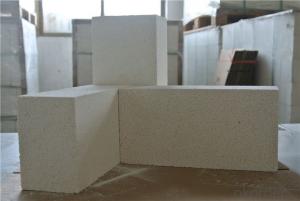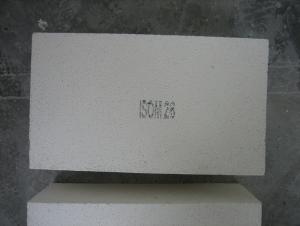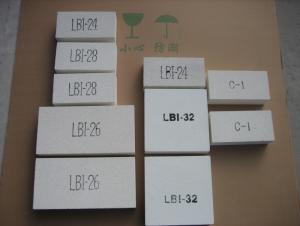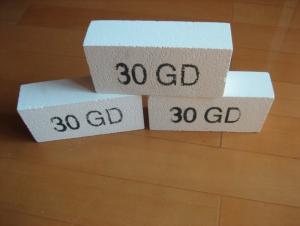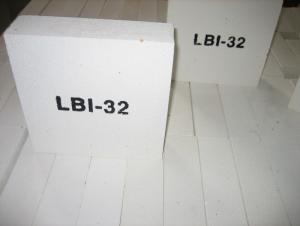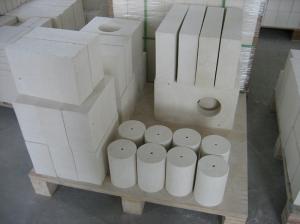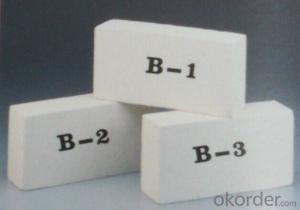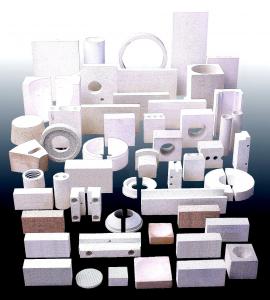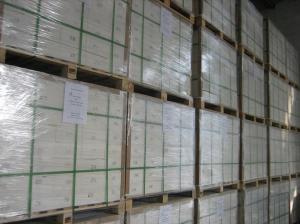Insulating Fire Brick - Refractory Mullite Insulating Refractory Brick JM 25
- Loading Port:
- Shanghai
- Payment Terms:
- TT OR LC
- Min Order Qty:
- 20 m.t.
- Supply Capability:
- 20 m.t./month
OKorder Service Pledge
OKorder Financial Service
You Might Also Like
Okorder series heat insulation brick
Okorder series thermal insulation brick is an effective, energy saving, low carbon, environmental protection advanced, according to the ASTM standard manufacturing products. Okorder series products have all kinds of materials in the field of metallurgy, industrial furnaces, aluminum, the best Li Ning petrochemical and insulation, electric power and glass ceramics. They can be used as part of an insulation or not to melt. Products have been widely used in the following furnace, achieved satisfactory results.
Application of heat preservation brick
Metallurgical Industry: blast furnace, hot blast furnace, heating furnace, etc..
Petrochemical Industry: ethylene cracking furnace, hydrogen furnace, the main furnace, heating furnace, etc..
Ceramic industry: roller kiln, kiln, etc..
Glass industry: glass furnace regenerator, etc.
Carbon industry: carbon furnace, etc..
Aluminum electrolysis industry: aluminum reduction cell, etc.
Other industries: tunnel kiln, shuttle kiln, etc..
Advantages of heat insulation brick
Low thermal conductivity: many air holes will bring good thermal insulation effect, energy saving.
High crushing strength: high crushing strength, volume stability.
Low heat storage: small heat storage, absorb more heat, energy-saving effect is obvious.
Chundu: High-speed Rail, low content of alkali metal impurities.
Accuracy: the size of the brick machining precision, cutting and grinding the special shape, speed up the brick.
Technical Data
ITEM | GJM30 | GJM28 | GJM26 | GJM23 |
Classification Temperature, ℉/℃ | 3000/1650 | 2800/1540 | 2600/1430 | 2300/1260 |
Bulk Density,g/cm³ | ≤1.0 | ≤0.9 | ≤0.8 | ≥0.5 |
Reheating Linear Change, % | ≤0.9 (1550℃,12 h) | ≤0.8 (1510℃,12 h) | ≤0.7 (1410℃,12 h) | ≤0.5 (1230℃,12 h) |
Al2O3 Content, % | ≥75 | ≥65 | ≥55 | ≥45 |
Fe2O3 Content, % | ≤0.5 | ≤0.6 | ≤0.7 | ≤1.0 |
Thermal Conductivity: | ||||
800℃, w/m.k | ≤0.39 | ≤0.37 | ≤0.35 | ≤0.18 |
1000℃, w/m.k | ≤0.43 | ≤0.41 | ≤0.39 | ≤0.20 |
1200℃, w/m.k | ≤0.48 | ≤0.46 | ≤0.43 | --- |
Insulating brick
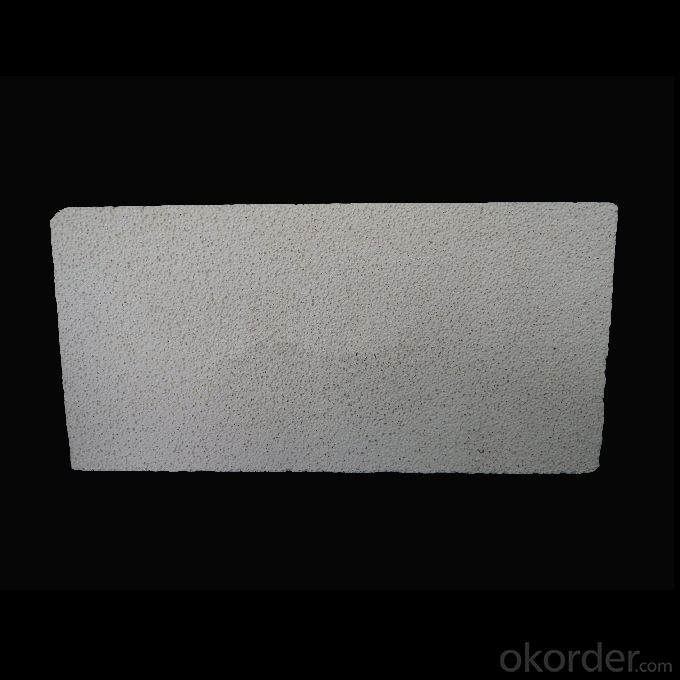
- Q: Can insulating fire bricks be used in low-temperature applications as well?
- In low-temperature scenarios, insulating fire bricks can be utilized to minimize heat loss and maintain a consistent temperature. They are suitable for insulating walls, floors, and roofs of structures or equipment that require temperature regulation, such as cold storage facilities, refrigerators, or freezers. In addition, insulating fire bricks are commonly employed in low-temperature furnaces and kilns to reduce energy consumption and maintain a steady temperature during the heating process. Their exceptional insulation properties ensure that the heat generated within the furnace or kiln remains contained, reducing heat loss and enhancing overall energy efficiency. Moreover, insulating fire bricks are lightweight and easy to handle, making them convenient for various low-temperature applications. They are also resistant to thermal shock and provide outstanding structural stability, guaranteeing long-lasting performance even in demanding environments. Overall, insulating fire bricks can be effectively utilized in low-temperature applications to improve energy efficiency, temperature control, and structural stability.
- Q: Can insulating fire bricks be used in the construction of steel production furnaces?
- Yes, insulating fire bricks can be used in the construction of steel production furnaces. Insulating fire bricks are specifically designed to withstand high temperatures and provide excellent thermal insulation, making them suitable for use in various industrial applications, including steel production. These bricks are made from lightweight materials that have low thermal conductivity, allowing them to effectively reduce heat loss and improve energy efficiency in furnaces. Additionally, insulating fire bricks have good resistance to thermal shock, which is important in steel production processes that involve rapid heating and cooling. Overall, the use of insulating fire bricks in the construction of steel production furnaces can help optimize performance, reduce energy consumption, and enhance the overall efficiency of the steelmaking process.
- Q: Do insulating fire bricks have a high insulating capacity?
- Yes, insulating fire bricks have a high insulating capacity. These bricks are specifically designed to have excellent thermal insulation properties, making them highly effective at preventing heat transfer. They are made from lightweight materials such as ceramic fibers, which have low thermal conductivity. This means that insulating fire bricks can effectively trap and retain heat, preventing it from escaping and keeping the surrounding area insulated. Due to their high insulating capacity, these bricks are commonly used in applications where heat retention and energy efficiency are important, such as in furnaces, kilns, and fireplaces.
- Q: Are insulating fire bricks resistant to phosphoric acid?
- Yes, insulating fire bricks are resistant to phosphoric acid.
- Q: Do insulating fire bricks have good mechanical strength?
- Compared to regular fire bricks, insulating fire bricks typically possess moderate mechanical strength. Although their primary function is to offer exceptional thermal insulation, they can still endure a certain degree of mechanical strain. Nevertheless, it is crucial to acknowledge that their mechanical strength might not be as robust as other fire brick variants explicitly engineered to withstand heavier loads and abrasion. Consequently, if the objective is to attain both high insulation and superior mechanical strength, contemplating the utilization of a blend of insulating fire bricks and regular fire bricks could be necessary.
- Q: Are insulating fire bricks resistant to reducing atmospheres?
- Yes, insulating fire bricks are resistant to reducing atmospheres. These bricks are specifically designed to withstand high temperatures and harsh conditions, including exposure to reducing atmospheres. They are made from high-quality refractory materials that are capable of resisting the effects of reducing atmospheres, which can contain gases such as carbon monoxide or hydrogen. Insulating fire bricks have a low thermal conductivity and high insulating properties, making them ideal for applications where reducing atmospheres are present. They can effectively protect the surrounding areas from heat transfer and prevent damage to the structure. Additionally, these bricks have a high mechanical strength and excellent resistance to thermal shock, allowing them to maintain their integrity even in challenging conditions. In summary, insulating fire bricks are indeed resistant to reducing atmospheres due to their durable construction and ability to withstand high temperatures and harsh environments.
- Q: Can insulating fire bricks be used in rotary kilns?
- Yes, insulating fire bricks can be used in rotary kilns. Insulating fire bricks are designed to have low thermal conductivity, which helps to reduce heat loss and improve energy efficiency in high-temperature applications like rotary kilns. Additionally, these bricks are lightweight and have good thermal shock resistance, making them suitable for the harsh and dynamic conditions within a rotary kiln.
- Q: Can insulating fire bricks be used in low-temperature applications as well?
- Yes, insulating fire bricks can be used in low-temperature applications. These bricks are designed to have low thermal conductivity, making them suitable for retaining heat and insulating against temperature fluctuations. They can effectively withstand lower temperatures while still providing insulation and preventing heat loss.
- Q: Can insulating fire bricks be used in the construction of incinerators?
- Indeed, insulating fire bricks are applicable for utilization in the construction of incinerators. The paramount significance lies in the exceptional thermal insulation properties possessed by these bricks, which play a vital role in sustaining elevated temperatures and enhancing energy efficiency within the incinerator. The bricks' low thermal conductivity enables them to proficiently retain heat and curtail heat loss. Moreover, their resistance to high temperatures enables them to endure the intense heat generated by the incineration process. Consequently, these bricks emerge as an appropriate preference for lining the walls, floors, and roofs of incinerator chambers, thereby ensuring the incinerator's efficient and secure operation.
- Q: Are insulating fire bricks suitable for use in the construction of smelters?
- Yes, insulating fire bricks are suitable for use in the construction of smelters. These bricks are designed to withstand high temperatures and provide excellent insulation properties, making them ideal for lining the walls and floors of smelters. They help to retain heat, reduce energy loss, and protect the structure from extreme heat. Additionally, insulating fire bricks are lightweight and easy to install, making them a preferred choice for smelter construction.
Send your message to us
Insulating Fire Brick - Refractory Mullite Insulating Refractory Brick JM 25
- Loading Port:
- Shanghai
- Payment Terms:
- TT OR LC
- Min Order Qty:
- 20 m.t.
- Supply Capability:
- 20 m.t./month
OKorder Service Pledge
OKorder Financial Service
Similar products
Hot products
Hot Searches
Related keywords
